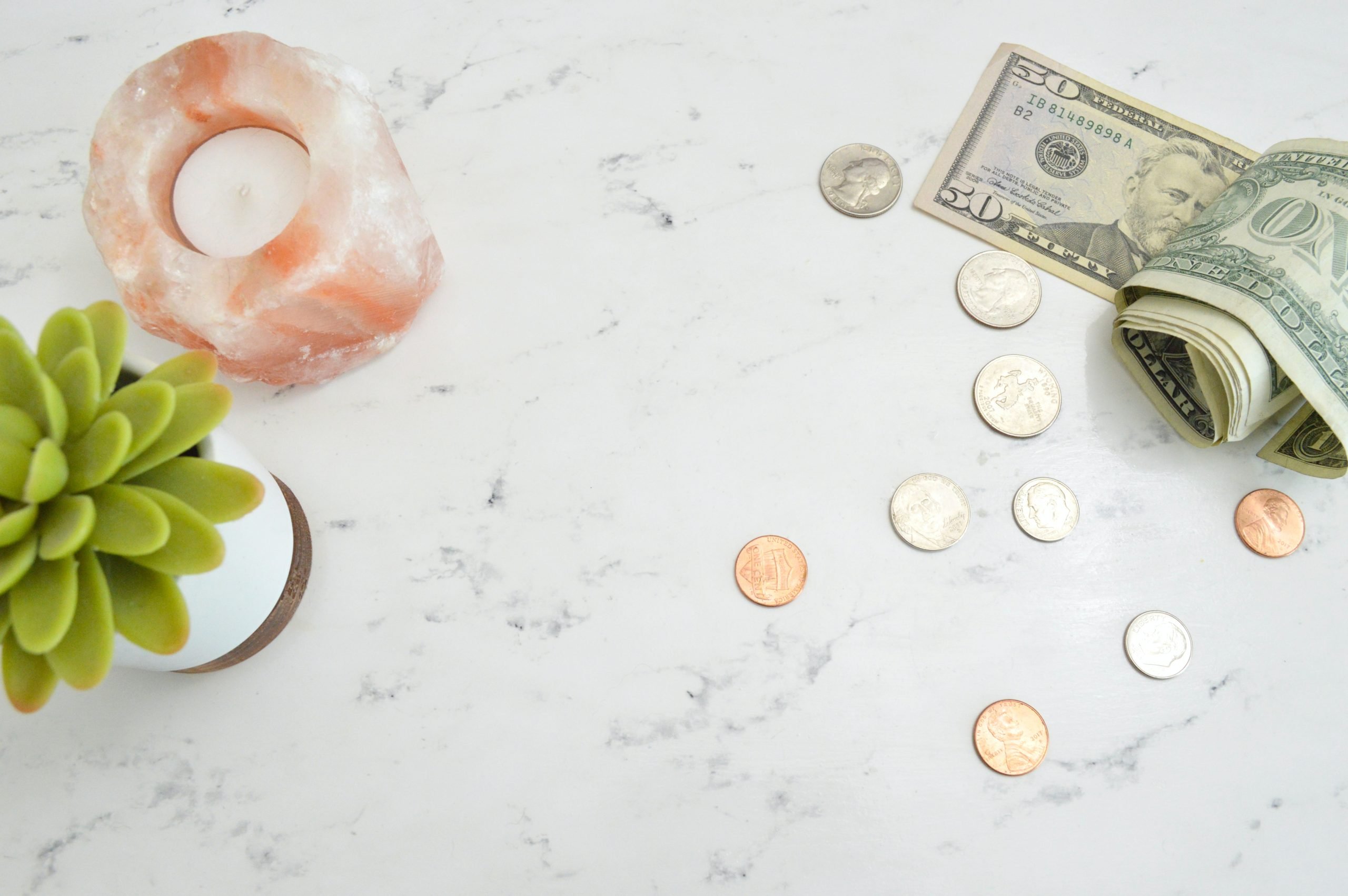
In the past few years, I had to get creative with how to stretch our income and save. Although our financial circumstances have changed, the act of living frugally is something that has stuck with me. I’ve learned living simply has impacted our lives for the better and making a budget and sticking to it has given us a lot more control over our finances and helped us with saving money.
1. Make a Budget
This first step is the most important. Determine what your monthly income is then add up all of your bills and monthly expenses. I’m a big fan of “zero-based budgeting” (popularized by Dave Ramsey) because every dollar has a purpose. If you use this method, you also want to include your saving and spending into your budget. For example, you will allow a set amount of money for shopping, travel, gifts, etc.
>> RELATED READ :: How to Create a Zero-Based Budget <<
2. Cancel Unused Subscriptions
If you’re really trying to save, you can start by eliminating unnecessary subscriptions. Do you really need Netflix, Hulu, Paramount, AppleTV, HBO, and Disney? Probably not. You can always cancel your subscription and re-subscribe if you find your really missing that streaming platform.
If you go through your bank statements, you might even find you’re paying for subscriptions that you forgot about. When I did this during COVID, I realized we were paying for TWO Netflix accounts, one of which we didn’t even have access to.
3. Saving Money at the Grocery Store
I’ll admit, this one can be hard, especially since the cost of groceries has gone up. However, it is a flexible part of the budget, and there are many ways to save. I’m still working on perfecting our grocery budget, but some tips that have helped me are:
- Buying the store brand
- Buying essentials in bulk
- Checking out grocery store sales
- Grocery pick up
- Meal planning
>> RELATED READ :: 10 Tips to Save Money at the Grocery Store <<
4. Withdraw Cash Every Month for Spending Money
We’ve found this is the easiest way to stick to our budget. My husband and I each withdraw a certain amount at the start of each month to use for things like shopping, eating out for lunch, and going out with friends.
Another trick I recently discovered is withdrawing $100 a month to put away for Christmas. If you start at the beginning of the year, by December, you will have $1,200 set aside.
5. Saving Money by Making Food and Drinks at Home
Eating out adds up big time! If you spend $5 on coffee and $10 on lunch every day for five days a week, that’s $75 a week. That equates to almost $4,000 a year! I’ve became a stickler for making coffee at home and packing our lunches every day.
We also save a ton of money by eating most of our meals at home. When our family of four goes out to eat, it’s easily $100 after the tip.
6. Shop Around for Car/Home Insurance or Refinance
It’s always a good idea to shop around for the best rates for car and home insurance about once a year. You can get big discounts for bundling the two together and usually get a large discount for paying in full for car insurance every six to 12 months.
Refinancing is also a good option to lower your monthly payments if your interest rate is high. However, keep in mind when you refinance you’re usually adding time onto the length of your loan. Better yet, if possible, try to avoid financing at all. (See tip number 7.)
7. Pay Off Debt and Pay Cash for Everything
Let me preface this by saying, I understand this isn’t a reality for everyone to achieve overnight, myself included (hello, student loans). However, it’s always a good goal to be debt free. Interest is essentially throwing money away, so if you’re able to pay off any of your debt, do it as soon as you can.
There are several methods on paying off debt. Dave Ramsey has a very popular method called the “Snowball Method.” In this method, you tackle your smallest debts first regardless of the interest rate, and then use that payment to put towards the next smallest debt. You can also work towards paying off debt with the highest interest rate first — especially anything with an interest rate over seven percent.
Instead of financing things like furniture, pay cash. If new items are not in the budget, shop resale or Facebook marketplace.
>> RELATED READ :: Meet Kara, Who Is Almost Debt Free! <<
8. Live Beneath Your Means
Once you create your budget, you can better understand how much you have to work with. If you’re spending more than you’re making, you’re living above your means.
This one can be really hard to hear. I heard a statistic on a financial documentary the other day that most people spend the majority of their money on their house and their car. If you cut out unnecessary spending in other categories and are still unable to save money, it might be time to look into downsizing your house or car.

9. Saving Money for Retirement
Unfortunately, I’ve seen firsthand what happens when you don’t save for retirement. If your employer offers a 401k, this is a great option. If they match contributions, it’s a good idea to put in at least as much as they match. If you don’t have a 401k, you can ask a financial planner about setting up a Roth IRA (see tip number 11).
10. Teach Your Kids about Financing and Budgeting
It doesn’t make sense that schools don’t teach finances (or at least not in depth). Many of us took student loans without truly knowing the life-long financial implications. After all, we were 18 years old. Many of us didn’t have parents who taught us about finances. It’s really up to us to pass on good habits and attitudes regarding money.
11. Seek Help from a Professional
Collin County has many knowledgeable financial advisors who are happy to help get your finances in order.
Living frugally and saving money can be challenging, especially when the cost of living continues to rise. I hope this list gave you a few ideas to cut back on your spending. I would love to hear your tips on living frugally and saving money in the comments!













